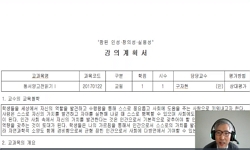The purpose of this study is to see the effects of phonological awareness training for children with reading disabilities. Previous studies indicate that children with reading disabilities have deficits in their phonological awareness. Based on the pr...
http://chineseinput.net/에서 pinyin(병음)방식으로 중국어를 변환할 수 있습니다.
변환된 중국어를 복사하여 사용하시면 됩니다.
- 中文 을 입력하시려면 zhongwen을 입력하시고 space를누르시면됩니다.
- 北京 을 입력하시려면 beijing을 입력하시고 space를 누르시면 됩니다.
음운인식훈련이 읽기장애아동의 음운인식과 읽기 능력에 미치는 효과 = (The)effects on phonological awareness and reading ability of children with reading disability through phonological awareness training
한글로보기https://www.riss.kr/link?id=T8989940
- 저자
-
발행사항
경산: 대구대학교, 2003
-
학위논문사항
학위논문(박사) -- 대구대학교 대학원 , 특수교육학과 정서·행동장애아교육전공 , 2003
-
발행연도
2003
-
작성언어
한국어
- 주제어
-
KDC
379.13 판사항(4)
-
DDC
371.914 판사항(21)
-
발행국(도시)
대전
-
형태사항
iii, 100p.: 삽도; 26cm
- 소장기관
-
0
상세조회 -
0
다운로드
부가정보
다국어 초록 (Multilingual Abstract)
Three boys with reading disabilities participated in the study. Child A is in the third grade with IQ 84. Child B is in the first grade with IQ 88. Child C is in the first grade with IQ 95.
The Study used a multiple probe design across subjects. Each phonological awareness test is performed every three interventions and data were analyzed by visual analysis. Phonological awareness training consists of 3 components, constructed according to the intrinsic property of Korean structure.
The first phonological awareness training was setting same initial or last letter sound on the letters of Form 1-2. The second phonological awareness training was phoneme additions, deletions, and substitutions on letters of Form 4-5. The third phonological awareness training was phoneme blending and distinction on total letters forms with specially two vowels.
The results showed as follows:
First, each child showed different phenomenon in baseline. Child A was better in setting initial letters, and child C was better in setting last letters. Child B didn't have any kind of phonological awareness. When the intervention was introduced, all the children showed more improvement in setting initial letters than last letters.
Second, all the children showed less improvement on phoneme substitution than addition and deletion.
Third, all the children showed improvement on phoneme blending and distinction.
Specially they confused the letters with two vowels or similar shape.
Fourth, performance level of reading letters was improved much more than performance level of reading words and nonwords. In particular, comparing reading on words with nonwords, reading on nonwords improved more. It seemed due to the improvement of phonological awareness.
The purpose of this study is to see the effects of phonological awareness training for children with reading disabilities. Previous studies indicate that children with reading disabilities have deficits in their phonological awareness. Based on the previous study outcomes, special educators began to apply direct teaching strategies with phonological awareness for the children instead of visual and perceptual training.
Three boys with reading disabilities participated in the study. Child A is in the third grade with IQ 84. Child B is in the first grade with IQ 88. Child C is in the first grade with IQ 95.
The Study used a multiple probe design across subjects. Each phonological awareness test is performed every three interventions and data were analyzed by visual analysis. Phonological awareness training consists of 3 components, constructed according to the intrinsic property of Korean structure.
The first phonological awareness training was setting same initial or last letter sound on the letters of Form 1-2. The second phonological awareness training was phoneme additions, deletions, and substitutions on letters of Form 4-5. The third phonological awareness training was phoneme blending and distinction on total letters forms with specially two vowels.
The results showed as follows:
First, each child showed different phenomenon in baseline. Child A was better in setting initial letters, and child C was better in setting last letters. Child B didn't have any kind of phonological awareness. When the intervention was introduced, all the children showed more improvement in setting initial letters than last letters.
Second, all the children showed less improvement on phoneme substitution than addition and deletion.
Third, all the children showed improvement on phoneme blending and distinction.
Specially they confused the letters with two vowels or similar shape.
Fourth, performance level of reading letters was improved much more than performance level of reading words and nonwords. In particular, comparing reading on words with nonwords, reading on nonwords improved more. It seemed due to the improvement of phonological awareness.
목차 (Table of Contents)
- 목차 = ⅰ
- Ⅰ. 서론 = 1
- 1. 연구의 의의 = 1
- 2. 연구의 목적 = 4
- 3. 용어의 정의 = 4
- 목차 = ⅰ
- Ⅰ. 서론 = 1
- 1. 연구의 의의 = 1
- 2. 연구의 목적 = 4
- 3. 용어의 정의 = 4
- Ⅱ. 이론적 배경 = 5
- 1. 읽기장애의 정의 및 읽기특성 = 5
- 2. 읽기장애아동을 위한 교육중재 동향 = 12
- 3. 읽기장애아동을 위한 음운인식훈련 = 14
- 4. 한글 특성과 읽기발달 = 17
- Ⅲ. 연구방법 = 24
- 1. 연구대상 = 24
- 2. 연구도구 = 26
- 3. 연구설계 = 33
- 4. 연구절차 = 34
- 5. 음운인식훈련 = 35
- 6. 자료처리 = 38
- Ⅳ. 연구결과 및 해석 = 40
- 1. 두운-각운에 대한 음운인식 = 40
- 2. 첨가-생략-대치에 대한 음운인식 = 47
- 3. 결합-변별에 대한 음운인식 = 55
- 4. 읽기능력의 변화 = 62
- Ⅴ. 논의 = 68
- Ⅵ. 결론 및 제언 = 71
- 1. 결론 = 71
- 2. 제언 = 71
- 참고문헌 = 73
- Abstract = 80
- 부록 = 82












